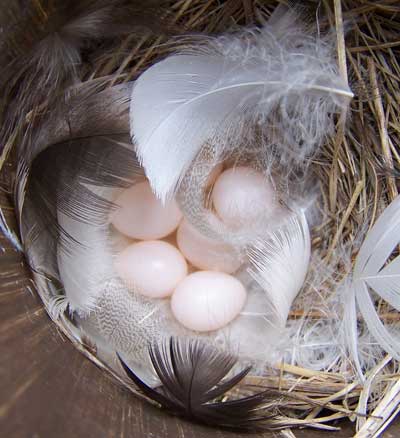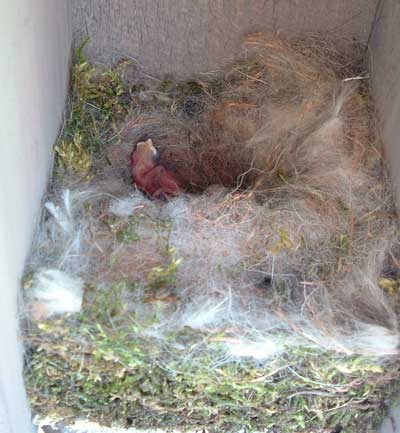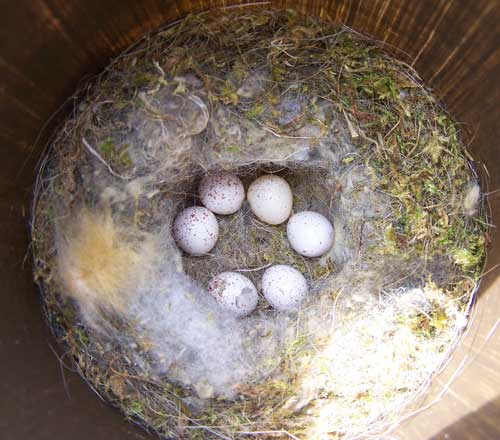|
|
Also see Nest ID Matrix (contents) and Egg ID Matrix (color, spots, etc.) descriptions of nests and eggs | PHOTO ALBUM with pictures of cavity nesting birds, nests and eggs. TABLE showing relative sizes of eggs, and egg photos side by side. To see other cavity nester bios/photos:

Tree Swallow eggs in a completed clutch. Notice feathers recurved over eggs for insulation. Also notice pointy smaller end. Early on, TRES eggs may appear pink, other times they are pure white (no speckles). Photo by Bet Zimmerman.
Carolina Chickadee nest. Photo by Peter Kwa.
The floor size on this nestbox is 4″ x 4″ so that the nestcup can be estimated to be about 2″ diameter. The moss base is about 1″ to 1.5″ thick.
1/2″ of pine shavings were placed under the moss base to entice Chickadees to nest. Most of the shavings were ‘excavated’ by the Chickadees. The fur lining is dog fur put in a suet cage about 20 feet away from the nestbox.

Black-capped Chickadee nest in a Gilberston box.
Chickadees are capable of excavating their own cavity. They may prefer birches for excavation because the outer bark stays intact, while the inner bark gets soft when rotten. This may explain why they seem to be attracted to Gilberston PVC boxes painted to look like white birches.
Chickadee nests can be confused with Tufted Titmouse nests, especially in the early stages of construction.
The student of Nature wonders the more and is astonished the less, the more conversant he becomes with her operations; but of all the perennial miracles she offers to his inspection, perhaps the most worthy of admiration is the development of a plant or of an animal from its embryo.
-Thomas Henry Huxley, British biologist and educator. Reflection #54, Aphorisms and Reflections, selected by Henrietta A. Huxley, Macmillan, 1907.
